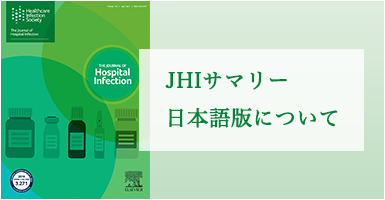大手術を要する新生児および乳幼児における細菌性敗血症および侵襲性真菌感染症の発生率およびリスク因子:イタリアの多施設共同前向き研究★
Incidence and risk factors of bacterial sepsis and invasive fungal infection in neonates and infants requiring major surgery: an Italian multicentre prospective study C. Auriti*, D.U. De Rose, A. Santisi, L. Martini, M.P. Ronchetti, L. Ravà, V. Antenucci, P. Bernaschi, L. Serafini, S. Catarzi, P. Fiorini, P. Betta, M.G. Scuderi, V. Di Benedetto, S. Ferrari, M. Maino, F. Cavigioli, I. Cocchi, M. Giuffré, E. Bonanno, C. Tzialla, J. Bua, L. Pugni, B. Della Torre, G. Nardella, D. Mazzeo, P. Manzoni, I. Capolupo, M. Ciofi degli Atti, A. Dotta, M. Stronati, M. Raponi, F. Mosca, P. Bagolan, on behalf of the Study Group of Neonatal Infectious Diseases of the Italian Society of Neonatology (SIN) *‘Bambino Gesù’ Children’s Hospital IRCCS, Italy Journal of Hospital Infection (2022) 130, 122-130
背景
大手術を受けた新生児および乳幼児における細菌性敗血症および侵襲性真菌感染症の発生率およびリスク因子に関する現在のデータは限られている。
目的
大手術を受けた新生児および 3 か月未満の乳幼児における細菌性敗血症および侵襲性真菌感染症の発生率、真菌保菌、敗血症のリスク因子、ならびに死亡率について評価すること。
方法
大手術を受けた 3 か月未満の乳幼児を登録した多施設共同前向き研究を、イタリアのレベル 3 の新生児集中治療室(NICU)13 室を対象に実施した。
結果
2018 年から 2021 年に、患児 541 例を登録した。入院中に、248 例が細菌感染症を、23 例が真菌感染症を発症した。84 例に真菌保菌が認められた。全体で、院内死亡率は 2.8%であったが、同率は感染乳幼児のほうが非感染乳幼児より高かった(P = 0.034)。多変量解析では、術前の抗菌薬曝露、血管カテーテルの超音波ガイド下または外科的留置、血管カテーテル留置期間、ならびに出生週数 28 週以下は、すべて細菌性敗血症と関連していた。侵襲性真菌感染症のリスクは、保菌乳幼児のほうが有意に高く(オッズ比[OR]8.20、P < 0.001)、血管カテーテル留置期間との直線的に関連が認められた。腹部手術を受けた乳幼児では、真菌保菌により侵襲性真菌感染症の確率が 11 倍高まった(OR 11.1、P < 0.001)。
結論
血管カテーテルの早期抜去やフルコナゾールの予防投与などの予防戦略は、腹部手術を受ける乳幼児において細菌および真菌による敗血症を予防するために考慮すべきであり、真菌保菌を認める乳幼児ではより一層考慮すべきである。
監訳者コメント:
大手術を受けた新生児および乳幼児における細菌性敗血症、侵襲性真菌感染症の発生率およびリスク因子に関する研究。リスク因子は成人で言われているものと大きくは変わらないが、新生児および乳幼児ではよりリスクが高く、敗血症を予防するバンドルを考えるために参考になる。
同カテゴリの記事
COVID-19-related mortality and hospital admissions in the VIVALDI study cohort: October 2020 to March 2023 O. Stirrup*, M. Krutikov, B. Azmi, I. Monakhov, A. Hayward, A. Copas, L. Shallcross *University College London, UK Journal of Hospital Infection (2024) 143, 105-112
Sinks in patient rooms in ICUs are associated with higher rates of hospital-acquired infection: a retrospective analysis of 552 ICUs G-B. Fucini*, C. Geffers, F. Schwab, M. Behnke, W. Sunder, J. Moellmann, P. Gastmeier *Institute of Hygiene and Environmental Medicine, Germany Journal of Hospital Infection (2023) 139, 99-105
Key predictors and burden of meticillin-resistant Staphylococcus aureus infection in comparison with meticillin-susceptible S. aureus infection in an Australian hospital setting S. Miyakis*, S. Brentnall, M. Masso, G. Reynolds, M.K. Byrne, P. Newton, S. Crawford, J. Fish, B. Nicholas, T. Hill, A.M. van Oijen, on behalf of the Wollongong Antimicrobial Resistance Research Alliance (WARRA) and One Health Understanding Through Bacterial Resistance to Antibiotics Knowledge (OUTBREAK) Consortium *University of Wollongong, Australia Journal of Hospital Infection (2022) 129, 41-48
Surgical site infection prevention bundle in elective colorectal surgery L.K. Dixon*, S. Biggs, D. Messenger, J. Shabbir *University Hospitals Bristol and Weston, UK Journal of Hospital Infection (2022) 122, 162-167
Ukraine war refugees - threats and new challenges for healthcare in Poland K. Lewtak*, K. Kanecki, P. Tyszko, P. Goryński, M. Bogdan, A. Nitsch-Osuch *Medical University of Warsaw, Poland Journal of Hospital Infection (2022) 125, 37-43



